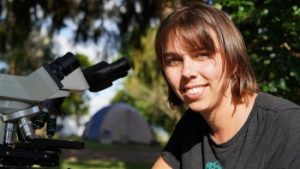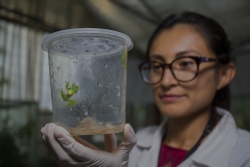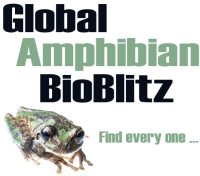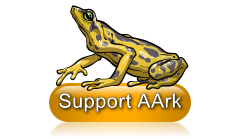Amphibian Ark’s George and Mary Rabb Fellowship was launched in 2000, and supports early or mid-career scientists and conservationists in research-based professional development that furthers amphibian conservation. This annual Fellowship is awarded to proposals that address species research priorities indicated in the Amphibian Red List and/or the Amphibian Ark Conservation Needs Assessment (CNA), or thematic research priorities indicated in the Amphibian Conservation Action Plan (ACAP). Applicants must be formally associated with a mentor or lead scientist at a relevant university, NGO, zoo/aquarium, or other established institution. The fellowship carries a $5,000 stipend and is open to applicants from all countries.
Fellowship winners
2022 – Rose Upton, The University of Newcastle, Australia
“Retention of genetic diversity of the endangered Littlejohn’s tree frog through sperm cryopreservation”
 The Amphibian Conservation Action Plan (ACAP) has identified the complimentary conservation approach of using assisted reproductive technologies (ART), such as sperm cryopreservation, as a priority area of research. Progress in translating ART research into application has been a challenge. This grant will provide me the opportunity to bridge this gap in an endangered tree frog and a co-occurring threatened ground frog, representing two of the three native Australian frog families. To incorporate cryopreservation of sperm into the Litoria littlejohni and Heleioporus australiacus breeding programs I will: 1) validate the use of a previously developed cryopreservation protocol in a related Litoria species in L. littlejohni, whilst making preliminary attempts to achieve the same for H. australiacus and 2) collect and cryopreserve sperm from at least five founder males of the University of Newcastle’s L. littlejohni breeding program, as well from 15-20 males captured at the Blue Mountains and Central Coast populations.
The Amphibian Conservation Action Plan (ACAP) has identified the complimentary conservation approach of using assisted reproductive technologies (ART), such as sperm cryopreservation, as a priority area of research. Progress in translating ART research into application has been a challenge. This grant will provide me the opportunity to bridge this gap in an endangered tree frog and a co-occurring threatened ground frog, representing two of the three native Australian frog families. To incorporate cryopreservation of sperm into the Litoria littlejohni and Heleioporus australiacus breeding programs I will: 1) validate the use of a previously developed cryopreservation protocol in a related Litoria species in L. littlejohni, whilst making preliminary attempts to achieve the same for H. australiacus and 2) collect and cryopreserve sperm from at least five founder males of the University of Newcastle’s L. littlejohni breeding program, as well from 15-20 males captured at the Blue Mountains and Central Coast populations.
2020 – Noemi Torres Sarango, Ministerio de Ambiente y Agua, Cuenca, Ecuador
“Development of a loop-mediated isothermal amplification assay for detection of the causal agent of chytridiomycosis.”
 The project will apply this alternative to traditional PCR-testing for chytrid fungi to Ecuador to help track chytridiomycosis in the wild and manage the disease in ex situ colonies in the country. This accurate, rapid, and less expensive diagnostic will expand capacity in the region. Additionally, working with colleagues at the University of Cuenca, will provide a professional development opportunity for Noemi.
The project will apply this alternative to traditional PCR-testing for chytrid fungi to Ecuador to help track chytridiomycosis in the wild and manage the disease in ex situ colonies in the country. This accurate, rapid, and less expensive diagnostic will expand capacity in the region. Additionally, working with colleagues at the University of Cuenca, will provide a professional development opportunity for Noemi.













